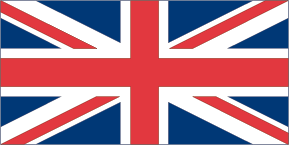Fins Explained
When considering the way fins work there are many variables that account for differences in performance.
The majority of the following description is based on surfboard law but the theory is pretty much generic. There are basically four things to think about...
1. Base length of the Fins : In general larger fins provide more stable forward drive. This is especially true for the base length, where the fin attaches to the kayak.
2. Flex : For beginner/intermediates, going for more flex fins will provide forgiving turns. More rigid ones tend to give quicker turns.
3. Height or Depth : Fin makers measure the fin using the length perpendicular to the bottom of the kayak. The longer the fins, the more contact they make with the water under more conditions, but you trade that in by needing to work harder to make turns.
4. The placement : Where the fins go, has a lot to do with the idea of finding the 'sweet spot', like on a tennis racquet. There will be a spot where you place your back foot that gives you the best turning responses. A big spot is best because you don't have to be in the perfect spot to get the responsiveness you want to have.
Which Fin?
If you weigh 80kgs or more, you would want to go a notch higher in the fin size. Conversely, smaller people do not need to have bigger fins. Also if you are attacking larger waves then you want to maximize the fin contact and that's when you tend to choose longer fins.
Kayaks have traditionally been finless, but many modern Surf Kayaks have tri-fin setups.
When buying a kayak, the most versatile setup is two boxes for the side fins and a box in the set further back and middle. This way you can switch around, if the fancy takes you, to a smaller or larger middle fin with or without side fins.
A long fin helps keep the kayak from spinning out or side slipping, but it will also effect the looseness during turns. 8-10" will probably do fine for a single fin and tri-fin can go from 3-8" centre fins with 2-4" side fins. A lot of fin area will stabilize the kayak, but it will limit the looseness of the turns.
Cutaway fins are relatively narrow at the base compared to the tip of the fin and are far looser than full fins. The shorter the fin, the less drag in turns, as well but at some point you risk.
High turns on a steep wave will cause the fin to pop out of the water resulting in a spin out.
Subtle changes (1/4") in fin position can make a big difference. Moving the middle fin forward in the box will help with trim speed and help loosen up the kayak. Unless you put it so far forward that you must do more rail turns (on the softer part of the rail) than fin turns and the kayak may also spin out more often. Moving the fin back will increase.
Most single fins are placed a little farther back than the middle fin on a tri-fin setup.
On three finned kayaks, the more you move the middle fin towards the side fins, the looser the kayak will be (for small waves), towards the back the more it will hold in and draw out your turn (for bigger waves).
Using a big retro fin with side fins may be counter productive, as you would have too much total fin area, more than you need, and thus causing needless drag. The bigger and farther back in the box your centre fin is, the more it will anchor the tail of your kayak in the curl of the wave.






